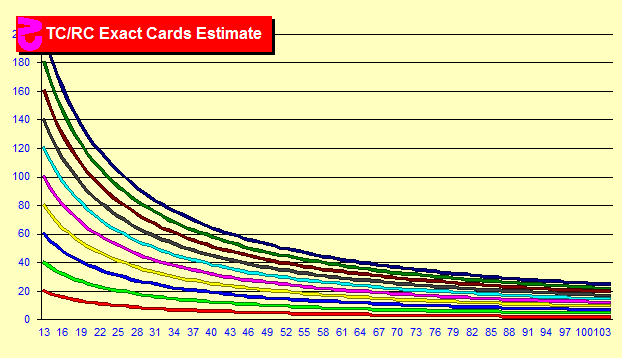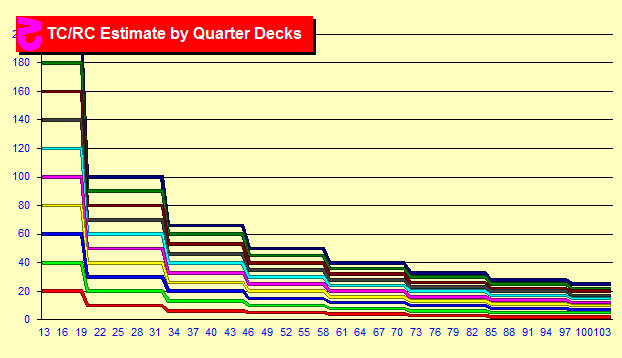Fractional Insurance Index
by , 04-25-2012 at 04:50 AM (27475 Views)
Nearly everyone uses integer indices these days as attempting to use indices like +1.4 provide little additional gain. This isn’t just because indices aren’t that sensitive. It is also because such theoretic indices aren’t even correct. The advantage over increasing counts for a decision is not a simple linear relationship. A decision may make sense at a count of 1.3 and 1.5 but not 1.4. When we focus in more closely and look at the advantage chart between two integer counts, we no longer see a smooth curve; but see a choppy mess.
Griffin tells us that there is an exception. Insurance is the only linear play in Blackjack. This is because insurance is based on a very simple relationship between tens and non-tens, does not depend on dealer draws, and does not depend on multiple player draws. So, some percentage of players do use non-integer indices for insurance. For example, we are told that the HiLo insurance index for double-deck is +2.4.
So, what is the floored insurance index for HiLo double-deck? Oddly, it is +3, not +2. The problem is that insurance is only linear theoretically. For a human, it is not linear. This is because humans do not calculate true count using the exact number of cards remaining. Instead, they typically estimate the remaining cards in increments of quarter, half or full decks. This estimation method destroys linearity.
Below is a chart of theoretic true counts. The x-axis is un-dealt cards. The y-axis is the true count. The lines are running counts of 5 through 50. For example, the red line is a running count of +5. With 13 cards remaining, the true count is 20. 5 divided by one-fourth remaining decks. What we see are nice smooth lines.
The second chart is the same, except that we estimate remaining cards by quarter-decks. The smooth lines are gone. We now have jerky lines. Linearity is gone when we calculate true counts as a human calculates them. If the linearity is gone in this calculation, then linearity must also not exist in the indices.











